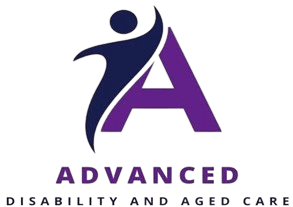Music therapy has emerged as a recognised and effective intervention within the framework of the National Disability Insurance Scheme (NDIS) in Australia.
Music therapy is an evidence-based clinical practice conducted by qualified music therapists who use music to address physical, emotional, cognitive, and social needs. Unlike recreational music activities, music therapy is tailored to meet the individual goals of participants, often forming part of a broader support plan. This therapy can significantly improve quality of life for people with disabilities, offering both therapeutic benefits and meaningful engagement.
Understanding Music Therapy in the NDIS Framework
The NDIS is designed to provide Australians living with significant and permanent disabilities access to the supports they need to enhance their independence and participation in the community. Within this framework, music therapy is recognised as an allied health service. It can be funded if it is deemed reasonable and necessary to help participants achieve their NDIS plan goals. These goals might include improved communication, increased mobility, enhanced emotional regulation, or greater participation in social activities.
Music therapy sessions are usually conducted by registered music therapists who have completed accredited training and are recognised by the Australian Music Therapy Association (AMTA). These professionals work collaboratively with participants, their families, and other support providers to develop strategies that align with the NDIS plan.
Benefits of Music Therapy for NDIS Participants
Music therapy offers numerous advantages, especially for participants of the NDIS, owing to their differing conditions. Its benefits have been realized in individuals affected with autism spectrum disorder, intellectual disabilities, acquired brain injuries, and other brain disorders like cerebral palsy and multiple sclerosis.
One important advantage is improved communication. For people who have difficulty speaking, music offers a different channel through which one can communicate. Melodic and rhythmic cues can activate brain areas responsible for speech and help with articulation. This is useful for children with developmental delays, as well as individuals recovering from strokes.
Equally as important is emotional control. Music therapy gives a secure and well-organized environment from which participants can freely express their feelings and process. Suitable organized musical activities can effectively reduce worry, symptoms of depression, and help to calm and relax. This emotional stability helps one become more active and engaged in education, work, and community life.
There are clear physical benefits as well. Activities such as drumming, dancing, and playing an instrument also aid in the development of motor skills and coordination. For the physically inactive, simply listening to selected pieces of music supports physiological changes (for example, heart rate, muscle tension) that aid in relaxation and provide some relief to pain.
Personalised Approaches and Techniques
The effectiveness of music therapy lies in its ability to be personalised. A music therapist assesses a participant’s abilities, preferences, and goals before designing a program. This may involve active participation—such as singing, songwriting, or instrument playing—or receptive experiences, such as guided music listening.
Techniques like improvisation allow participants to create spontaneous music, fostering creativity and self-expression. Structured interventions, such as rhythmic auditory stimulation, can be used to support movement rehabilitation for people with physical impairments. These approaches are often integrated with other therapies, such as physiotherapy, occupational therapy, and speech therapy, to provide holistic support.
Accessing Music Therapy Through the NDIS
To access music therapy through the NDIS, the participant’s plan must include funding for Capacity Building supports under the category of Improved Daily Living or Improved Health and Wellbeing. Evidence from health professionals or allied health practitioners is typically required to justify its inclusion. This evidence should outline how music therapy directly relates to the participant’s goals and how it is expected to deliver measurable outcomes.
Participants can choose to engage music therapy providers who are NDIS-registered or, if self-managed, non-registered providers. In either case, the focus remains on ensuring that the therapy is delivered by a qualified professional and that progress is reviewed regularly to confirm its effectiveness.
The Broader Impact on Inclusion and Participation
Music therapy does more than address individual therapeutic goals; it also fosters social inclusion and community participation. Group sessions, for example, encourage interaction, cooperation, and shared creativity among participants. This can be particularly valuable for individuals who may otherwise experience social isolation due to their disability.
Furthermore, music therapy can help dismantle barriers between people with and without disabilities. Public performances, community music groups, and collaborative projects provide opportunities for NDIS participants to showcase their abilities and engage with the wider community on equal terms.
Challenges and Considerations
It is widely known that music therapy is beneficial for a person’s health. However, there are challenges when it comes to its delivery within the framework of the NDIS. Having access to music therapists is particularly problematic within the region and remote areas. In those situations, telehealth models may serve as an alternative solution, though they may not entirely replicate the sensory and social nuances of in-person sessions.
Cost is another challenge. Even though the NDIS covers therapies that are reasonable and necessary, the participant and of course, their family must ensure that the service fits within their allocated budget. Therefore, the participant and their family must engage in budgeting within the framework of their allocated funds. That points to the necessity of detailed planning and constant review of results.
Conclusion
Within the context of NDIS, music therapy sits uniquely as a flexible, evidence based method of supporting people with disabilities. Through addressing the physical, cognitive, emotional and social areas, it helps to reach personal goals and improve many aspects of the individual’s life. Further expanding awareness of the benefits of music therapy will allow for its integration into NDIS plans, which could increase the potential for inclusion, communication, and meaningful participation for registered clients Australia-wide.
